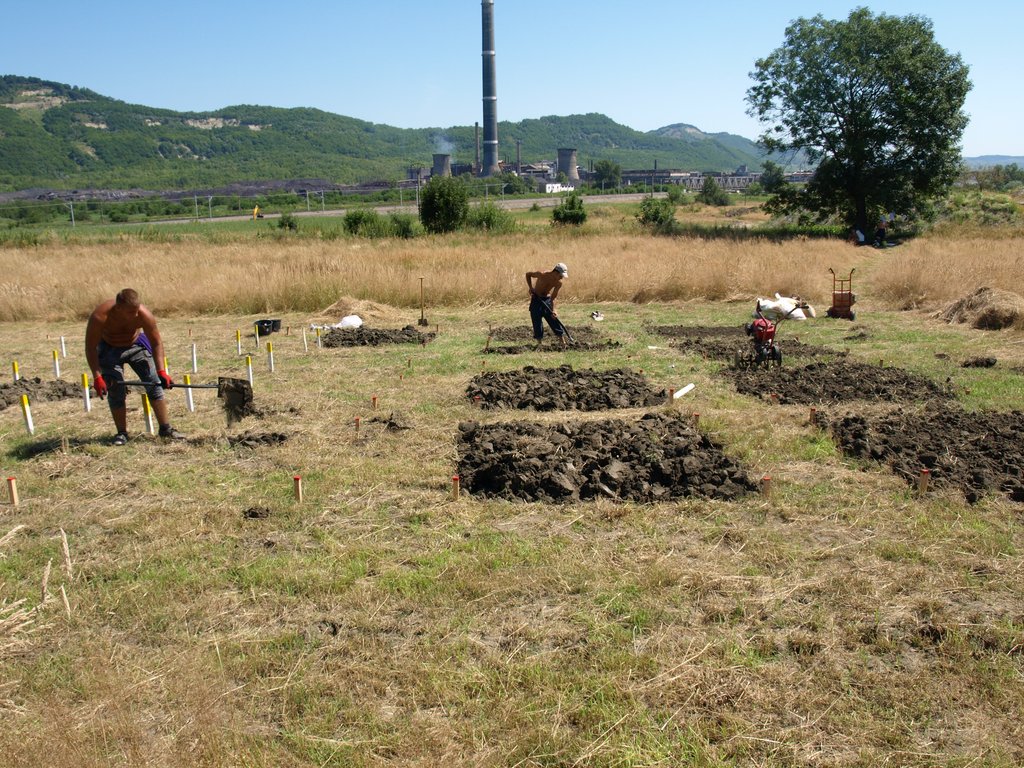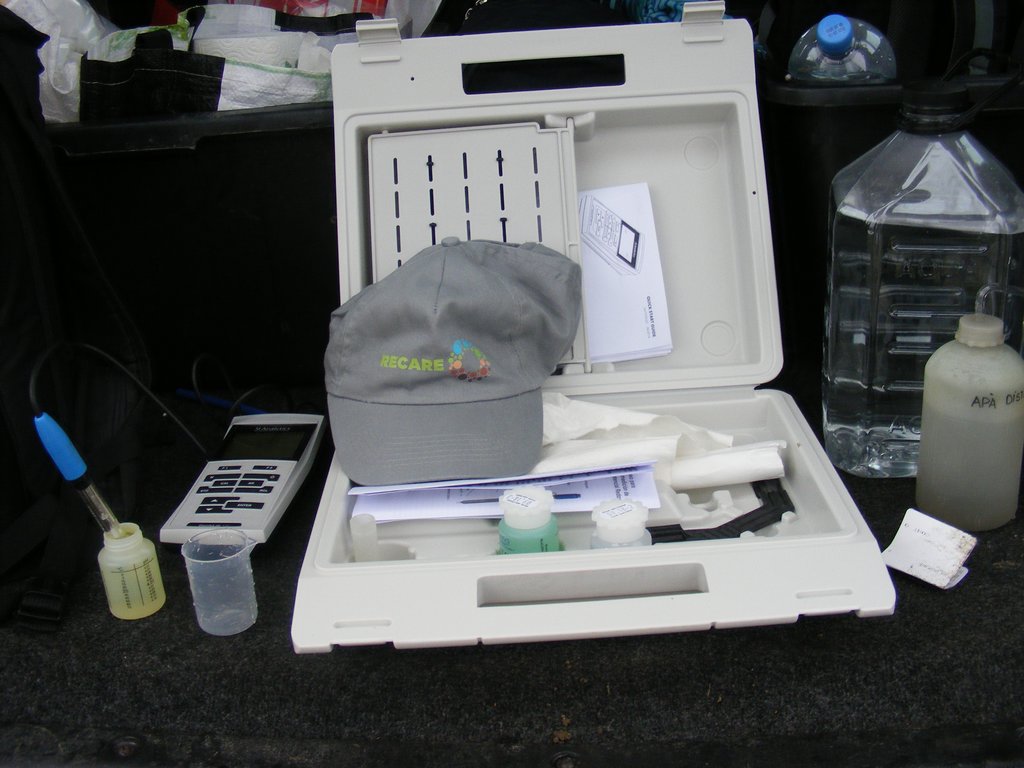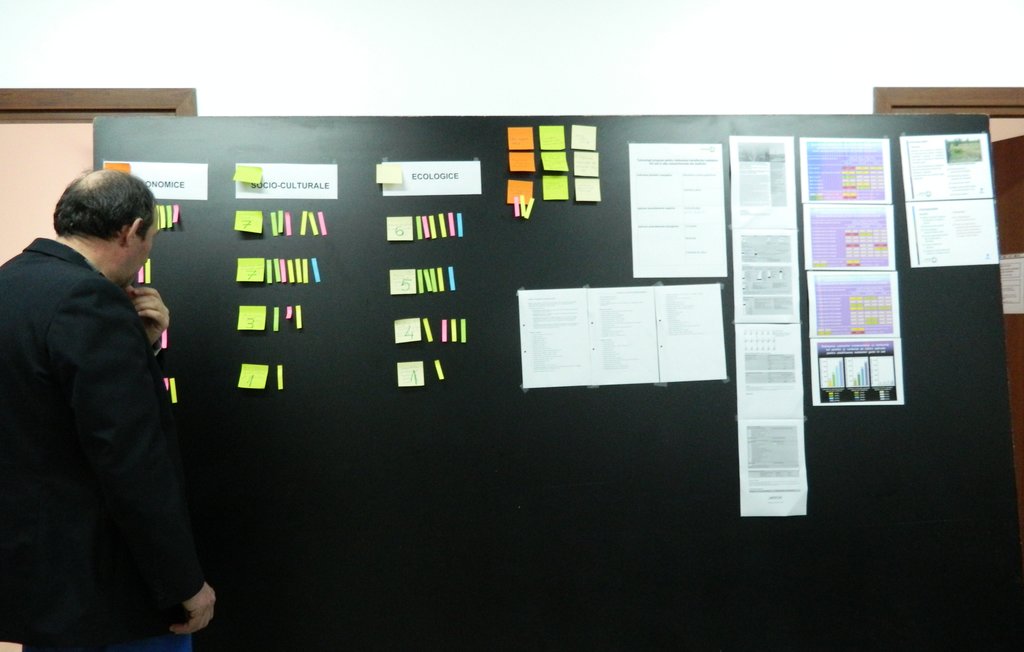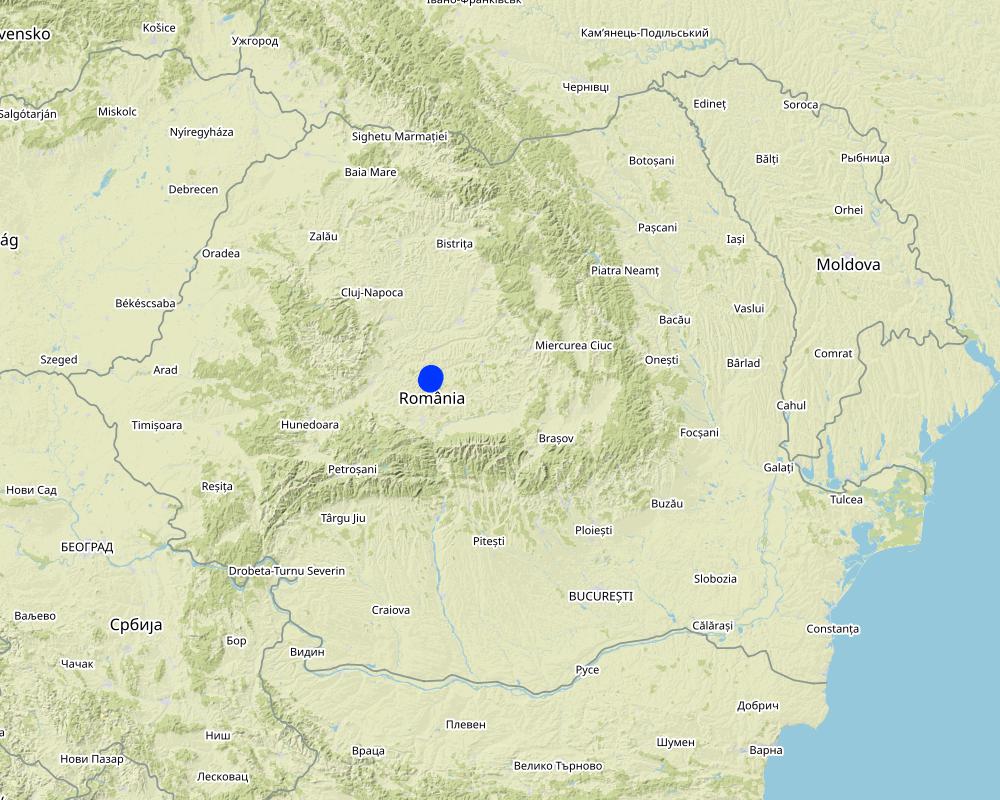Information and awareness raising for safe use of metal contaminated land [Romania]
- Creación:
- Actualización:
- Compilador: Nicoleta Vrinceanu
- Editor: –
- Revisores: GWJ van Lynden, Joana Eichenberger
Cresterea gradului de constientizare si informarea populatiei in scopul utilizarii in siguranta a terenurilor din zonele contaminate cu metale grele
approaches_570 - Romania
Visualizar secciones
Expandir todo Colapsar todos1. Información general
1.2 Detalles de contacto de las personas de referencia e instituciones involucradas en la evaluación y la documentación del Enfoque
1.3 Condiciones referidas al uso de datos documentados mediante WOCAT
¿Cuándo se compilaron los datos (en el campo)?
02/03/2015
El compilador y la/s persona(s) de referencia claves aceptan las condiciones acerca del uso de los datos documentados mediante WOCAT :
Sí
2. Descripción del Enfoque MST
2.1 Breve descripción del Enfoque
The aim of this Aprroach is to increase the awareness about the risk related to agricultural use of contaminated land and to present the appropriate technologies for sustainable use of contaminated land in order to reduce the transfer of contaminants into the food chain. The implementation of appropriate SLM will improve the soil and crop quality with positive effects on the quality of life for local community from contaminated area.
2.2 Descripción detallada del Enfoque MST
Descripción detallada del Enfoque MST:
The Case Study area is located in Sibiu County, around the most important factory for processing of non-ferrous ores – Copsa Mica. The main environmental damages in the area Copşa Mică (Romania) are caused by ore processing and this town was classified as an environmental disaster area. The main pollutants identified in this area were cadmium, copper, lead and zinc. According to data from LPIS provided by Sibiu County Center of Agency for Payments and Intervention in Agriculture (2012) the arable land represents 60.4% from total area (2818.6ha) being located mainly in bottomland. Grassland represents 34.9% from total area, that means 1627.3 ha. Orchards and vineyards represent a very small proportion from total cultivated area, only 2.3% (106 ha) and 2.4% (110.3 ha).
Large scale migration from urban to rural areas (village surrounding the Copsa Mica) took place after reducing the activities of industrial platform. In villages located in polluted area there are many small landowners. The lands are used as agricultural land and the products are used for own consumption. Also, due to both, low fertility of soil (as a result of contamination) and lack of financial resources, there are lands abandoned. The agricultural use of the land represents a risk for population health and also reduces the number of methods that could be used for remediation.
The aim of the approach was to increase the awareness about the risk related to agricultural use of contaminated land and to present the appropriate technologies for sustainable use of contaminated land in order to reduce the transfer of contaminants into the food chain. The implementation of appropriate SLM will improve the soil and crop quality with positive effects on the quality of life for local community from contaminated area.
During workshops stakeholders are informed about state of soil degradation from their area, about risk related to agricultural use of contaminated land. The researchers and SLM experts share their experience with land owners and land users related to sustainable measures for reducing the effects of soil contamination and together they select the measures to be tested. The production of biomass for non-food purpose has been tested as a potential solution to produce valuable biomass while remediating the soil. Immobilization of heavy metals in soil was agreed by the traditional land owners who want to keep the agricultural use for their land.
Land owners offer the plot for testing the new technology and researchers / SLM experts organised experimental field and presenting the results to land owners, local authority, farmers, students during information session (field day, workshop)
2.3 Fotos del Enfoque
Comentarios generales sobre las fotos:
Activities for information and test the new technology selected by land users and experts
2.5 País/ región/ lugares donde el Enfoque fue aplicado
País:
Romania
Región/ Estado/ Provincia:
Sibiu county
Especifique más el lugar :
Copsa Mica
Comentarios:
Both Copsa Mica and Axente Sever are located in highly contaminated area.
Map
×2.6 Fechas de inicio y conclusión del Enfoque
Si no se conoce el año preciso, indique la fecha aproximada en la que se inició el Enfoque:
hace menos de 10 años (recientemente)
2.7 Tipo de Enfoque
- proyecto/ basado en un programa
2.8 Propósitos/ objetivos principales del Enfoque
The aim was to increase the awareness about the risk related to agricultural use of contaminated land and to present the appropriate technologies for sustainable use of contaminated land in order to reduce the transfer of contaminants into the food chain. The implementation of appropriate SLM will improve the soil and crop quality with positive effects on the quality of life for local community from contaminated area.
2.9 Condiciones que facilitan o impiden la implementación de la/s Tecnología/s aplicadas bajo el Enfoque
normas y valores sociales/ culturales/ religiosos
- impiden
The traditional farmers want to preserve the agricultural use of land (crop production and grazing). Growing biofuel crops would require changing the land use for a long period of time.
disponibilidad/ acceso a recursos y servicios financieros
- impiden
Lack of financial resources of the land users. The financial inputs for implementation are considered high even if there are subsidies for energy crops.
entorno institucional
- impiden
There are no interest for SLM on contaminated lands
marco de trabajo legal (tenencia de tierra, derechos de uso de tierra y agua)
- impiden
Due to the large number of owners and the division of the land into small plots there are difficulties with respect to the application of appropriate SLM.
políticas
- impiden
Although there are legal frameworks regarding pollution control there are no institutions responsible for the development and implementation of remediation measures. Also there are no clear legal descriptions of decision criteria for choosing the appropriate remediation actions.
conocimiento de MST, acceso a apoyo técnico
- impiden
Although there are known risks associated with soil contamination with heavy metals, landowners do not have enough information about SLM which could limit the transfer of metals into the food chain.
mercados (para comprar insumos, vender productos) y precios
- impiden
The energy crop market is not developed yet.
carga de trabajo, disponibilidad de mano de obra
- facilitan
3. Participación y roles de las partes interesadas involucradas
3.1 Partes interesadas involucradas en el Enfoque y sus roles
- usuarios locales de tierras/ comunidades locales
land users, local authority, farmers
They participate in information sessions and one land user offered a plot to test new technologies for immobilization of heavy metals in soil.
- investigadores
Researchers - soil scientist, enviromental experts,
They share their experience in respect with risk related with agricultural use of land in contaminated area and appropriate SLM for limiting the transfer of heavy metals into food chain.
3.2 Involucramiento de los usuarios locales de tierras/ comunidades locales en las distintas fases del Enfoque
| Involucramiento de los usuarios locales de tierras/ comunidades locales | Especifique quién se involucró y describa las actividades | |
|---|---|---|
| iniciación/ motivación | pasivo | Researchers organised information sessions (workshops and stakeholder meetings) for land owners, local authority, farmers, students. |
| planificación | interactivo | Researchers and SLM experts organised participatory sessions with land owners, local authority, farmers, students in order to select the appropriate SLM Technology to be tested. |
| implementación | interactivo | Land owners offer the plot for testing the new technology and researchers and SLM experts organised experimental field and presenting the results to land owners, local authority, farmers, students during information session (field day, workshop) |
| monitoreo y evaluación | ninguno | |
| Research | ninguno |
3.3 Flujograma (si estuviera disponible)
Descripción:
NA
3.4 La toma de decisiones en la selección de Tecnología(s) MST
Especifique quién decidió la selección de las Tecnología/ Tecnologías a implementarse:
- principalmente usuarios de tierras con el apoyo de especialistas MST
Explique:
Selection of appropriate SLM Technologies was made by land users, farmers and land owners suppoted by SLM specialists during participatory sessions.
Especifique las bases que sustentaron la toma de decisiones:
- la evaluación de conocimiento MST bien documentado (la toma de decisiones se basa en evidencia)
- hallazgos de investigaciones
- la experiencia personal y opiniones (no documentadas)
4. Apoyo técnico, fortalecimiento institucional y gestión del conocimiento
4.1 Construcción de capacidades / capacitación
¿Se proporcionó la capacitación a usuarios de tierras/ otras partes interesadas?
Sí
Especifique quién fue capacitado:
- usuarios de tierras
Forma de capacitación:
- de agricultor a agricultor
- áreas de demostración
- reuniones públicas
Temas avanzados:
Status of soil degradation by heavy metal contamination. Risk related to agricultural use of contaminated land. Measures for reducing the transfer of contaminants into food chain.
4.2 Servicio de asesoría
¿Los usuarios de tierras tienen acceso a un servicio de asesoría?
Sí
Especifique si servicio proporcionado se realizó:
- en los campos de los usuarios de tierras
4.3 Fortalecimiento institucional (desarrollo institucional)
¿Se establecieron o fortalecieron instituciones mediante el Enfoque?
- no
4.4 Monitoreo y evaluación
¿El monitoreo y la evaluación forman parte del Enfoque?
Sí
Si respondió que sí, ¿la documentación se utilizará para monitoreo y evaluación?
Sí
4.5 Investigación
¿La investigación formó parte del Enfoque?
Sí
Especifique los temas:
- ecología
5. Financiamiento y apoyo material externo
5.1 Presupuesto anual para el componente MST del Enfoque
Si no se conoce el presupuesto anual preciso, indique el rango:
- 2,000-10,000
Comentarios (ej. fuentes principales de financiamiento/ donantes principales):
Research projects funding from National Research Fund and EU projects
5.2 Apoyo financiero/material proporcionado a los usuarios de tierras
¿Los usuarios de tierras recibieron financiamiento/ apoyo material para implementar la Tecnología/ Tecnologías? :
Sí
Si respondió sí, especifique el tipo o los tipos de apoyo, condiciones y proveedor(es) :
Subsidies for energy crops
5.3 Subsidios para insumos específicos (incluyendo mano de obra)
- agrícola
| Especifique qué insumos se subsidiaron | En qué grado | Especifique los subsidios |
|---|---|---|
| semillas | parcialmente financiado | 173 US$ / ha - spring 2015 |
5.4 Crédito
¿Se proporcionó crédito bajo el Enfoque para actividades MST?
No
5.5 Otros incentivos o instrumentos
¿Se usaron otros incentivos o instrumentos para promover la implementación de Tecnologías MST?
No
6. Análisis de impacto y comentarios de conclusión
6.1 Impactos del Enfoque
¿El Enfoque mejoró el conocimiento y capacidades de los usuarios para implementar MST?
- No
- Sí, un poco
- Sí, moderadamente
- Sí, mucho
Were highlighted risks of agricultural use of contaminated land and the possibilities of limiting the transfer of contaminants into the food chain by changing land use or by immobilizing metals in soil.
¿El Enfoque llevó a oportunidades de empleo, ingresos?
- No
- Sí, un poco
- Sí, moderadamente
- Sí, mucho
Implementing the SLM could lead to high economic value of the crop (biomass fuel production, healthy crops, etc).
6.2 Motivación principal del usuario de la tierra para implementar MST
- producción incrementada
- incremento de la renta(bilidad), proporción mejorada de costo-beneficio
- pagos/ subsidios
The farmers recieved the subsidiy for energy crops.
6.3 Sostenibilidad de las actividades del Enfoque
¿Pueden los usuarios de tierras sostener lo que se implementó mediante el Enfoque (sin apoyo externo)?
- no
Si respondió no o incierto, especifique y comente:
They need financial support to continue application of selected SLM.
6.4 Fortalezas/ ventajas del Enfoque
| Fuerzas/ ventajas/ oportunidades desde la perspectiva del usuario de la tierra |
|---|
| Receiving the knowledge tools to improve the quality of crops and offering the possibility to provide new products (from biofuel crops) on the market which increase the farm income. |
| Fuerzas/ ventajas/ oportunidades desde la perspectiva del compilador o de otra persona de referencia clave |
|---|
| Awareness raising about the risk related to agricultural use of contaminated land lead to increase the number of land users which want to implement appropriate SLM for contaminated land. |
6.5 Debilidades/ desventajas del Enfoque y formas de sobreponerse a ellos
| Debilidades/ desventajas/ riesgos desde la perspectiva del usuario de la tierra | ¿Cómo sobreponerse a ellas? |
|---|---|
|
Difficulties to continue the activities initiated without external financial input. |
Subsidies |
| Undeveloped energy crop market | Support for creating local or regional markets for energy crops |
| Debilidades/ desventajas/ riesgos desde la perspectiva del compilador o de otra persona de referencia clave | ¿Cómo sobreponerse a ellas? |
|---|---|
| Inadequate authorities' interest for SLM | The authorities have to provide help in order to meet the needs (support for poor land users) in order to implement SLM activities to change land uses or to adopt measures for reducing transfer of contaminants into the food chain. |
7. Referencias y vínculos
7.1 Métodos/ fuentes de información
- visitas de campo, encuestas de campo
- entrevistas con usuarios de tierras
- compilación de informes y otra documentación existente
7.2 Referencias a publicaciones disponibles
Título, autor, año, ISBN:
Nicoleta Vrinceanu, Motelica, D.M., Dumitru, M., Eugenia GAMENŢ, Calciu, I., Veronica Tanase, Mihaela Preda (2008) – Assessment of Some Inorganic Additives Used for In-Situ Remediation of Heavy Metals Polluted Soils, Abstract book of The 1st European Conference on Remediation of Soil, sediment and Groundwater – Biological, Chemical and Physical Technologies, 21–23 october 2008, Amsterdam, Olanda, p.173.
Título, autor, año, ISBN:
Comănescu, l., Nedelea, A., Paisa, M., 2010. Soil pollution with heavy metals in the area of Copșa Mică town – Geographical considerations, Metalurgia International XV 4, 81-85.
Título, autor, año, ISBN:
Lăcătușu, R., Lăcătușu, A.R., 2010. Evolution of heavy metals pollution from Copșa Mică. Scientific Papers, UASVM Bucharest, Series A, LIII, 85-92.
Título, autor, año, ISBN:
Petronela-Bianca Pavel, Puschenreiter, M., Wenzel, W.W., Elena Diacu, Barbu, C.H., Aided phytostabilization using Miscanthus sinensis × giganteus on heavy metal-contaminated soils, Science of the Total Environment 479–480 (2014) 125–131
7.3 Vínculos a la información relevante disponible en línea
Título/ descripción:
Miscanthus giganteus - o solution for contaminated land
URL:
http://www.tribuna.ro/stiri/actualitate/miscanthus-plantat-la-cop-sa-mic-a-inc-a-din-2007-51036.html
Título/ descripción:
Miscanthus giganteus - the crops too expensive for romanian farmers
URL:
http://www.tribuna.ro/stiri/eveniment/culturile-de-miscanthus-prea-scumpe-pentru-agricultorii-sibieni-76070.html
Título/ descripción:
*** Annual Report of EPA Sibiu County. 2012. (in Romanian)
URL:
http://apmsb.anpm.ro/upload/62681_Raport%20anual%20privind%20monitorizarea%20PIGCA%20pentru%20anul%202011.pdf
Vínculos y módulos
Expandir todo Colapsar todosVínculos
No hay vínculos
Módulos
No se hallaron módulos







